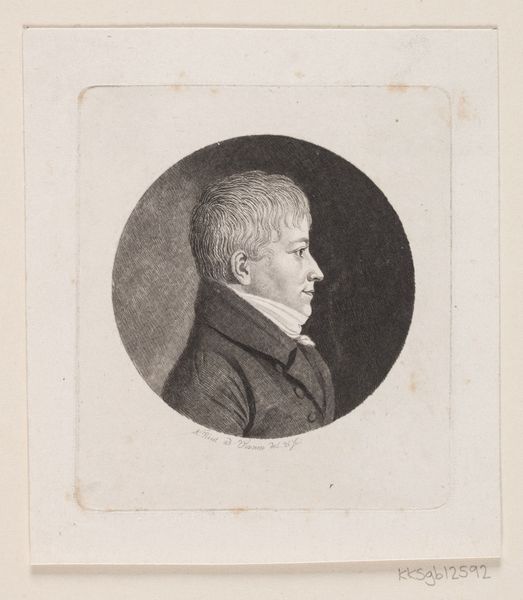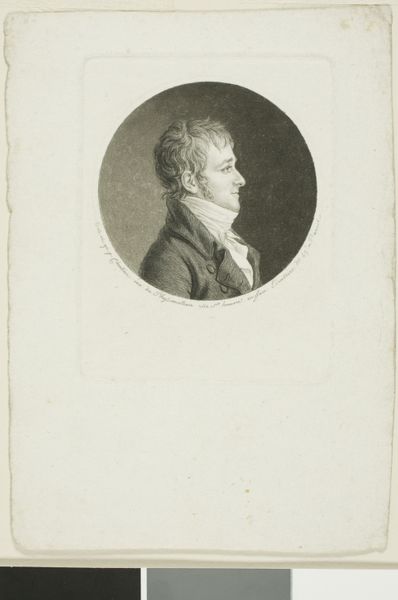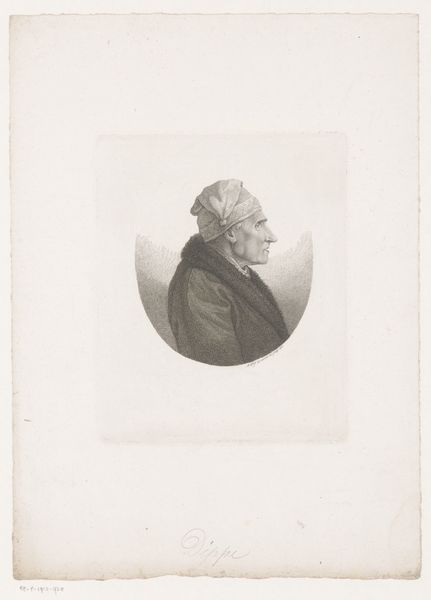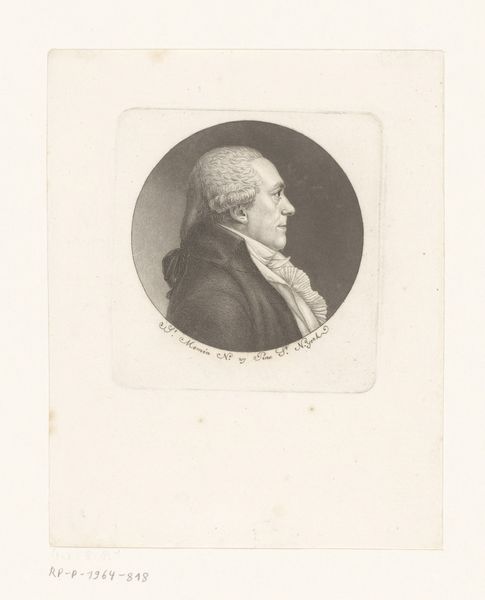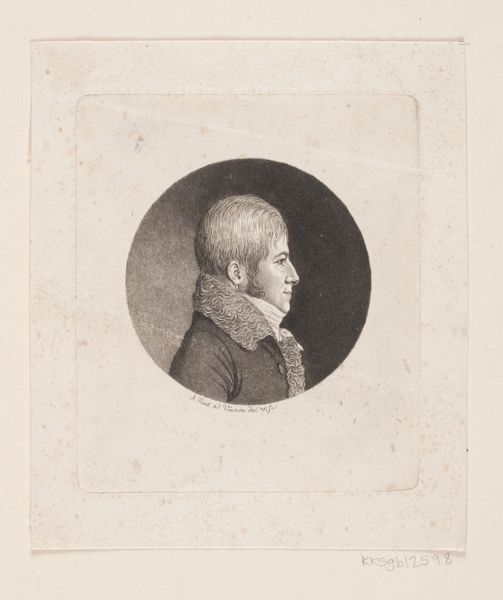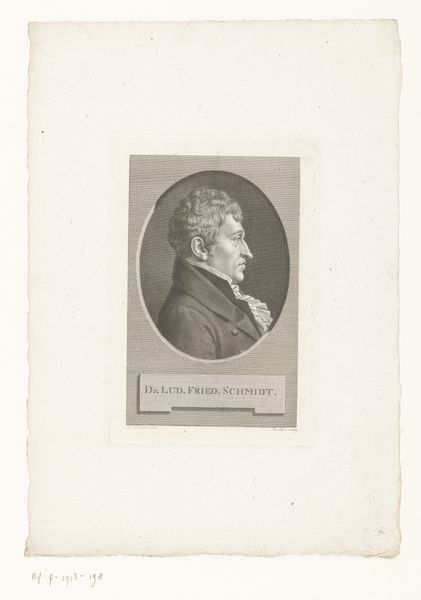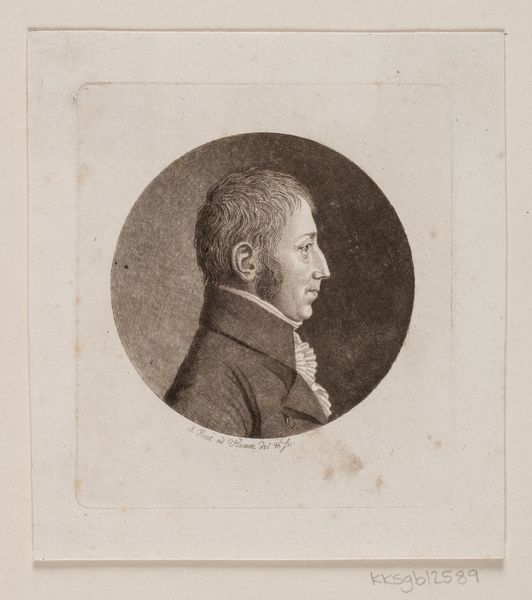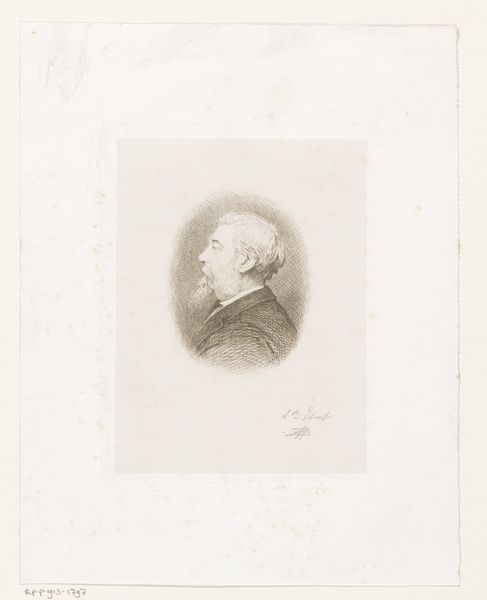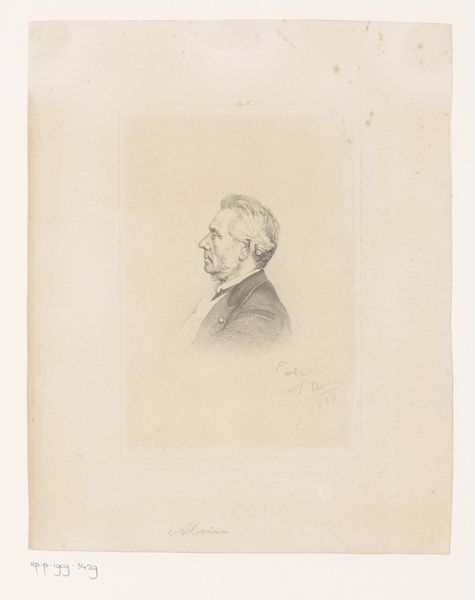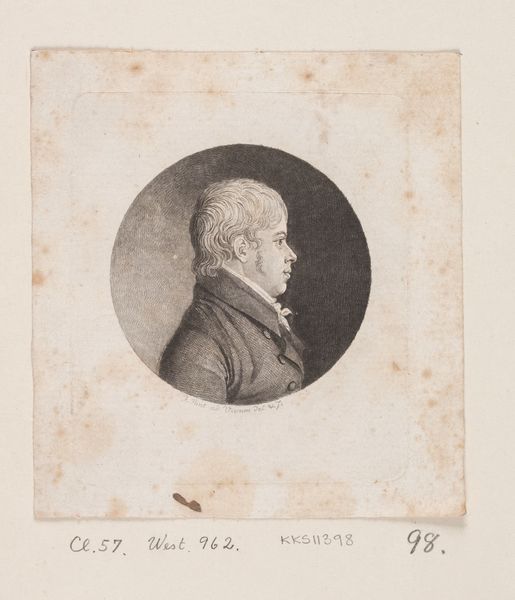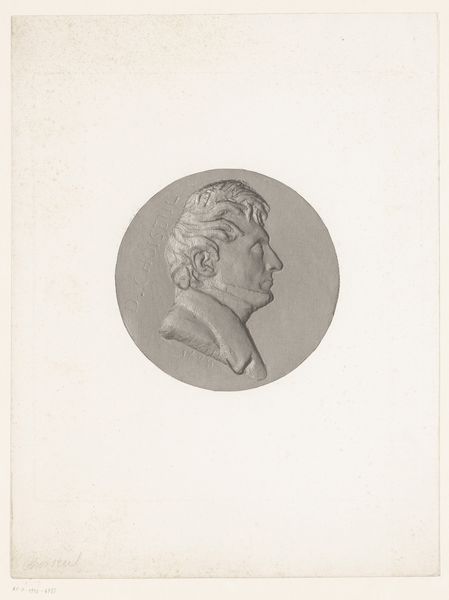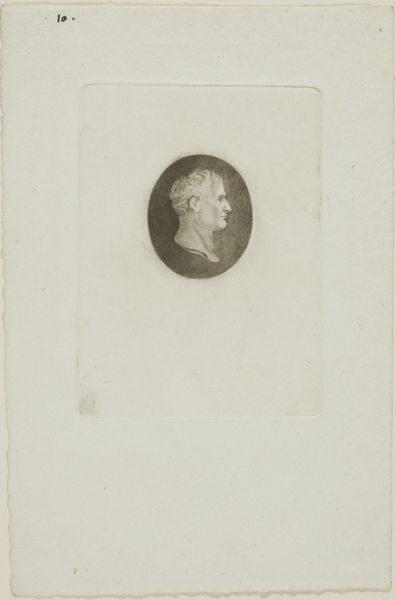
print, engraving
#
portrait
# print
#
charcoal drawing
#
genre-painting
#
engraving
Dimensions: 62 mm (None) (billedmaal), 94 mm (height) x 81 mm (width) (plademaal)
Editor: So here we have "Unknown Man's Portrait," dating sometime between 1767 and 1824. It’s an engraving by Andreas Flint. I'm struck by how sharply defined his profile is against the shadowed background. What catches your eye when you look at it? Curator: Well, first, I feel an echo of Jane Austen novels swirling about the image; I’m instantly imagining secret rendezvous in rain-slicked gardens! But more precisely, what’s so interesting is how the artist uses engraving – a very precise medium – to create not just a likeness, but almost a mood. Notice how the tiny, closely-spaced lines define the curve of his nose, the set of his jaw... it speaks of quiet determination, don't you think? Editor: Definitely a sense of resolve! And the hair is quite something, almost defying gravity. Does that contribute to the overall impression? Curator: Absolutely! It adds a touch of the romantic hero, wouldn't you say? Not quite a Byronic swagger, but a hint of untamed spirit nonetheless. Plus, it highlights the engraver's skill – all those individual strands rendered with such care! What do you make of the lack of colour? Does it remove a certain humanity? Editor: I think it heightens the sense of history somehow. The monochrome makes it feel like a document, a glimpse into a past world. Curator: Precisely! And in a way, that anonymity becomes powerful. This "Unknown Man" becomes Everyman, a face from history that we can all project our own stories onto. Editor: I never thought of it that way. I came in seeing just a face, but now I'm seeing a whole era! Curator: Isn’t it marvelous how a single image can open up worlds? It’s why I still come to galleries every single day!
Comments
No comments
Be the first to comment and join the conversation on the ultimate creative platform.
